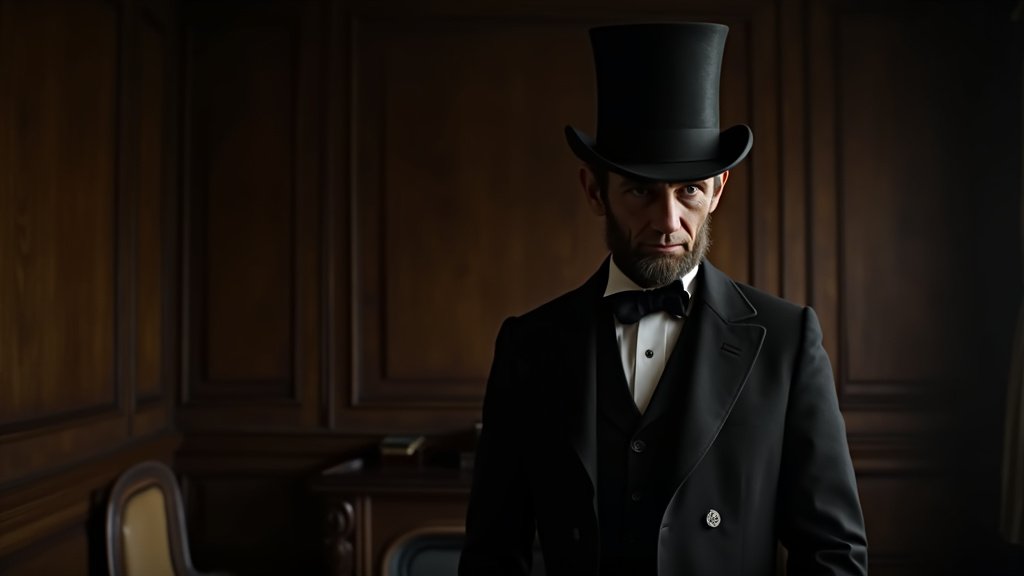Dressed for the Office: New Exhibit Unpacks Presidential Fashion as a Force of History
In the ever-evolving landscape of American politics, the attire of its leaders often speaks volumes, conveying messages of identity, authority, and societal connection. A significant new digital exhibit, launched on September 16, 2025, by the White House Historical Association (WHHA), delves into this fascinating intersection of style and statesmanship. Titled “Suited to Lead: The Lives of Six Presidents Through Fashion,” the exhibit offers a comprehensive look at how fashion choices have shaped, and been shaped by, the presidencies of some of America’s most influential figures.
The timely exhibit, created by Fiona Hibbard, an NYU student intern, examines the personal and political identities of six U.S. presidents: George Washington, John Quincy Adams, Abraham Lincoln, Theodore Roosevelt, Harry S. Truman, and Jimmy Carter. Through a meticulously researched digital narrative, “Suited to Lead” considers how dress functioned as a powerful tool of self-expression for these leaders, reflecting their individual preferences, the societal expectations of their times, and the positions they held.
The Sartorial Statements of Six Presidents
The exhibit posits that presidential fashion is far more than mere aesthetics; it’s a deliberate communication strategy. From the early days of the republic to more modern eras, leaders have used their clothing to project specific images and send nuanced messages. Fashion historian Summer Anne Lee, whose forthcoming book “Presidential Fashion: An Illustrated History” explores this theme in depth, notes how societal changes influenced presidential styles and that contemporary reactions to their dress were often substantial.
The WHHA’s digital presentation, enhanced with interactive elements, allows visitors to explore how dress served as a tool for self-expression, personal identity, and political positioning across different eras. Each president featured had a unique relationship with their clothing, making choices that either adhered to conventions or deliberately challenged them, ultimately leaving a lasting impression on American fashion and culture.
A Wardrobe Through American History
“Suited to Lead” highlights specific examples that illustrate the potent impact of presidential style:
* George Washington: As the nation’s first president, Washington strategically used homespun fabrics and blue coats to symbolize American identity and assert a visual break from British rule. His deliberate fashion choices aimed to set a standard for presidential appearance and national pride.
* John Quincy Adams: In the 1820s, Adams broke tradition by adopting long trousers, or pantaloons, over knee breeches. This shift, though common among average Americans, was seen as too modern for the presidency at the time, yet it made him more relatable to the public.
* Abraham Lincoln: Lincoln cultivated an iconic look featuring his signature stovepipe hat and a black frock coat, a practical choice that became synonymous with his appearance and conveyed his rugged, Western persona.
* Theodore Roosevelt: Known for his vigorous personality, Roosevelt adapted his style to suit various occasions, from frontier buckskin suits to military uniforms and tailored presidential attire, demonstrating his dynamic presence.
* Harry S. Truman: With a background as a haberdasher, Truman was known for his neat appearance and influenced styles, favoring well-tailored suits and popularizing the “sport shirt”.
* Jimmy Carter: His televised appearance in a cardigan sweater symbolized a move towards more casual, relatable presidential attire and promoted energy conservation, sparking significant public conversation.
Fashion, Society, and Presidential Legacy
The exhibit underscores that presidential fashion does not exist in a vacuum. It is deeply intertwined with societal shifts and evolving public expectations. The trending popularity of more casual wear, for instance, found its echo in Jimmy Carter’s approachable cardigan. Fashion historian Summer Anne Lee points out that presidential choices were often influenced by societal changes, and reactions to their dress were significant. The practical attire of pioneers on the Oregon Trail, like the bloomers worn to navigate the arduous journey, also highlights how clothing can adapt to necessity and evolving social norms.
In an era saturated with media and visual culture, where every detail of a public figure’s appearance is scrutinized, presidential fashion continues to be a potent, albeit often underappreciated, tool. It shapes public perception, influences legacy, and offers a unique lens through which to understand American history and the presidency itself. The White House Historical Association’s new digital exhibit, “Suited to Lead,” provides a compelling narrative that connects historical fashion choices with the broader themes of American identity, political communication, and the enduring power of personal style at the highest levels of American leadership. This significant news offers a fresh perspective on the men who have occupied the Oval Office, revealing that their statements were often made not just through words, but through the very fabrics they wore.




